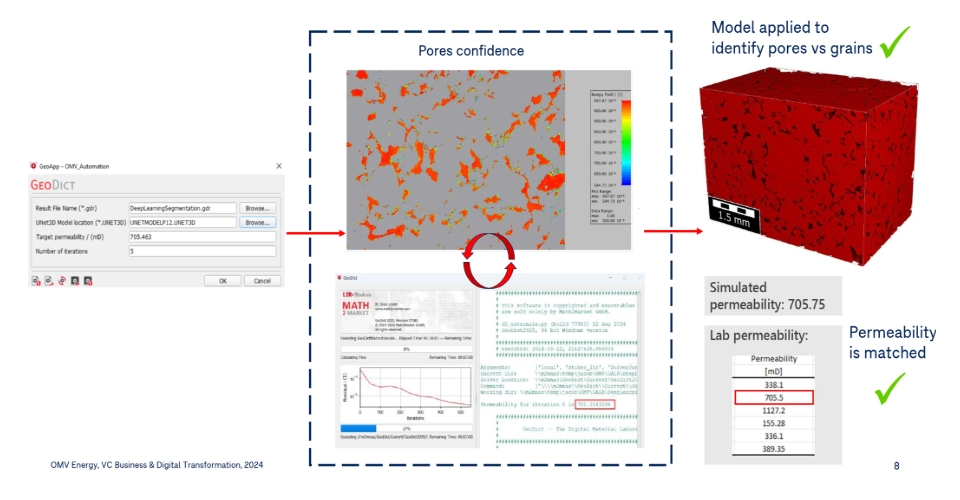Speaker: Andrew Jones, Expert Petrophysics, Petrophysics / OMV
DRS Automated Segmentation
Abstract
A joint project was initiated between OMV and Math2Market to investigate the possibility for automating and standardizing the segmentation of CT scans to digital rock structures. The project was split into two tranches – part one to prove the concept of iterating only with grain and pore space to match a measured routine core analysis permeability. Part two was to extend this to multi-mineral segmentation, again iterating to match a target measured permeability.
The two-material workflow (grain/pore) has shown good extension to a multitude of different CT scans (‘rock types’). The multi-material segmentation workflow has been shown to work well on similar ‘Rock type’ CT scans, however currently the extrapolation to unseen samples is poor.
The multi-mineral segmentation model utilizes GeoDict AI to train a 3D U-Net based on two input CT-Segmentation pairs. The segmentations in this instance are considered ‘ground truth’ for the purposes of training the network, however these segmentations are also subject to some error and uncertainty. The probability map for the multiple phases from the network is then used to iterate different segmentations with the objective to match the measured routine core analysis permeability. The final segmentation is selected based on the closest match to permeability.
Further QC of the output can be made against XRD data if this is available, however the CT scans will always struggle to pick up on the same number of different minerals. Further work is planned to try and improve the model, increasing the number of samples. This could potentially include artificial segmentation-CT scan pairs, to provide ‘ideal’ segmentations paired to noisy data.
The overarching goal is to have one model that can perform across a range different ‘rock types’ however it may be necessary to have separate models based on similar rock types (i.e. grain shapes, distribution, mineral content).

